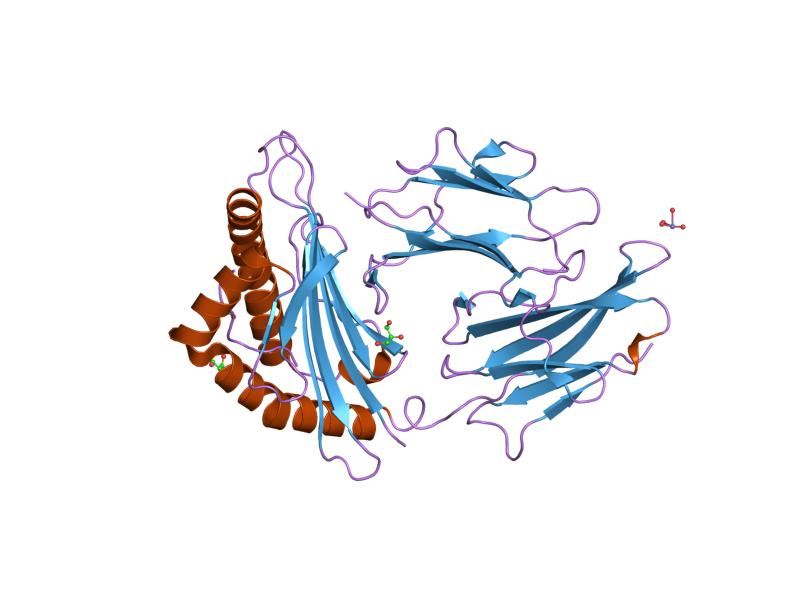Introduction of VIPR1
VIPR1 is encoded by VIPR1 gene. It belongs to the G-protein-coupled receptor (GPCR) family which has been extensively studied during the past few decades because it offers numerous possibilities for therapeutic applications. VIPR1 is expressed in many tissues, such as the brain (cerebral cortex, hippocampus, amygdala), lung, prostate, peripheral blood leukocytes, liver, small intestine, heart, spleen, placenta, kidney, thymus, and testis. Meanwhile, studies show that VIPR1 is related to natural virus-related peptides and the pharmacological effects of synthetic agonists or antagonists.
| Basic Information of VIPR1 | |
| Protein Name | Vasoactive intestinal polypeptide receptor 1 |
| Gene Name | VIPR1 |
| Aliases | VPAC1 |
| Organism | Homo sapiens (Human) |
| UniProt ID | P32241 |
| Transmembrane Times | 7 |
| Length (aa) | 457 |
| Sequence | MRPPSPLPARWLCVLAGALAWALGPAGGQAARLQEECDYVQMIEVQHKQCLEEAQLENETIGCSKMWDNLTCWPATPRGQVVVLACPLIFKLFSSIQGRNVSRSCTDEGWTHLEPGPYPIACGLDDKAASLDEQQTMFYGSVKTGYTIGYGLSLATLLVATAILSLFRKLHCTRNYIHMHLFISFILRAAAVFIKDLALFDSGESDQCSEGSVGCKAAMVFFQYCVMANFFWLLVEGLYLYTLLAVSFFSERKYFWGYILIGWGVPSTFTMVWTIARIHFEDYGCWDTINSSLWWIIKGPILTSILVNFILFICIIRILLQKLRPPDIRKSDSSPYSRLARSTLLLIPLFGVHYIMFAFFPDNFKPEVKMVFELVVGSFQGFVVAILYCFLNGEVQAELRRKWRRWHLQGVLGWNPKYRHPSGGSNGATCSTQVSMLTRVSPGARRSSSFQAEVSLV |
Function of VIPR1 Membrane Protein
The VPAC1 protein-coupled receptor can mediate the activity of immunomodulatory (primarily anti-inflammatory) actions of peptides, such as vasoactive intestinal peptide (VIP) and pituitary adenylyl cyclase-activating polypeptide (PACAP). Many studies conducted on VPAC1 show it is associated with various diseases, like, cancer, Postmenopausal osteoporosis, and Huntington's Disease. Patients with idiopathic achalasia show a significant difference in the distribution of SNPs affecting VIPR1, which suggests it could be a potential therapeutic target in the clinic.
 Fig.1 Structure of VIPR1 membrane protein.
Fig.1 Structure of VIPR1 membrane protein.
Application of VIPR1 Membrane Protein in Literature
This article describes a radiolabeled heterobivalent peptidic ligands (HBPLs), comprising a GRPR-binding (BBN7-14) and a VPAC1R-targeting (PACAP-27) peptide, to provide new ideas for tumor imaging and therapy.
This article selects nine monovalent antibodies (sdAbs) targeting the vasoactive intestinal peptide receptor 1 (VPAC1) receptor and studies the effect of VPAC1 antagonist. These results provide evidence on further investigate the role of VPAC1 in physiological and pathological conditions.
Authors in this group analyze the expression of selected miRNAs in the rat RT4 Schwann lipopolysaccharide (LPS) cell line by real-time qPCR, Western blot and ELISAs. Results show that the expression levels of pro-inflammatory cytokines, VIP and PACAP are increased.
This article focuses on investigating the involvement of VPAC1 in the development of experimental autoimmune encephalomyelitis (EAE) using a VPAC1-deficient mouse model.
This article evaluates the single-nucleotide polymorphism (SNP) rs9677, mapped in vasoactive intestinal peptide receptor 1 (VPAC1), and trying to confirm the association between rs9677 and type 2 diabetes (T2D) in female patients.
VIPR1 Preparation Options
To obtain the soluble and functional target protein, the versatile Magic™ membrane protein production platform in Creative Biolabs enables many flexible options, from which you can always find a better match for your particular project. Aided by our versatile Magic™ anti-membrane protein antibody discovery platform, we also provide customized anti-VIPR1 antibody development services.
As a forward-looking research institute as well as a leading custom service provider in the field of membrane protein, Creative Biolabs has won good reputation among our worldwide customers for successfully accomplishing numerous challenging projects including generation of many functional membrane proteins. Please feel free to contact us for more information.
All listed services and products are For Research Use Only. Do Not use in any diagnostic or therapeutic applications.